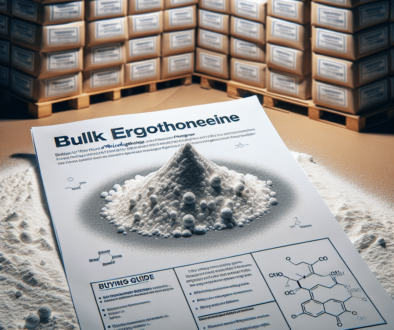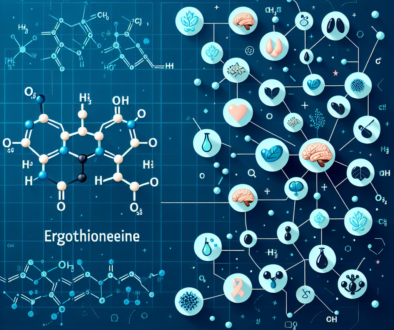Ergothioneine vs Ergot Poisoning: Key Differences
-
Table of Contents
- Ergothioneine and Ergot Poisoning: Understanding the Critical Differences
- What is Ergothioneine?
- What is Ergot Poisoning?
- Comparing Ergothioneine and Ergot Poisoning
- Chemical Structure and Function
- Health Implications
- Sources and Exposure
- Case Studies and Statistics
- Conclusion: Key Takeaways
- Discover ETprotein’s High-Quality Protein Products
Ergothioneine and Ergot Poisoning: Understanding the Critical Differences
Ergothioneine and ergot poisoning are two terms that may sound similar but refer to vastly different things. One is a naturally occurring compound with potential health benefits, while the other is a serious condition resulting from consuming toxic compounds. This article will delve into the key differences between ergothioneine and ergot poisoning, exploring their sources, effects on human health, and the importance of distinguishing between the two.
What is Ergothioneine?
Ergothioneine (ET) is a naturally occurring amino acid derivative that is found in various types of food, such as mushrooms, grains, and certain types of meat. It is known for its antioxidant properties and is believed to play a role in protecting cells from oxidative damage. Ergothioneine is also recognized for its potential anti-inflammatory effects and is being studied for its possible benefits in combating age-related diseases.
- Source: Ergothioneine is primarily found in mushrooms, but it is also present in smaller amounts in other foods.
- Benefits: Research suggests that ergothioneine may have antioxidant, anti-inflammatory, and neuroprotective effects.
- Consumption: Ergothioneine can be consumed through diet or as a dietary supplement.
What is Ergot Poisoning?
Ergot poisoning, also known as ergotism, is a condition caused by consuming ergot-contaminated grains. Ergot is a fungus (Claviceps purpurea) that affects rye and other cereals, producing toxic compounds called ergot alkaloids. These alkaloids can cause severe health issues, including hallucinations, convulsions, and gangrene. Historically, ergotism was a common problem in Europe when rye was a staple food, leading to outbreaks known as “St. Anthony’s Fire.”
- Source: Ergot poisoning results from consuming grains contaminated with Claviceps purpurea fungus.
- Effects: Symptoms of ergot poisoning include hallucinations, convulsions, and gangrene due to vasoconstriction.
- Prevention: Modern agricultural practices and food safety standards have significantly reduced the incidence of ergotism.
Comparing Ergothioneine and Ergot Poisoning
Chemical Structure and Function
The chemical structures of ergothioneine and ergot alkaloids are different, which accounts for their distinct biological functions. Ergothioneine contains a thiol group and a betaine structure, contributing to its antioxidant capacity. In contrast, ergot alkaloids have a complex structure that interacts with neurotransmitter systems, leading to their toxic effects.
Health Implications
While ergothioneine is being researched for its potential health benefits, ergot alkaloids are known for their detrimental health effects. Ergothioneine’s antioxidant properties may support cellular health and reduce the risk of chronic diseases. On the other hand, ergot alkaloids can cause severe vasoconstriction and neurological symptoms, which can be life-threatening if not treated promptly.
Sources and Exposure
Ergothioneine is obtained through dietary sources, particularly mushrooms, and is considered safe for consumption. Ergot poisoning is the result of consuming ergot-contaminated grains, which is now rare due to strict food safety regulations. It is important to note that while ergothioneine is intentionally added to some foods and supplements for its potential benefits, ergot contamination is accidental and unwanted.
Case Studies and Statistics
Historical accounts of ergotism outbreaks, such as the one in France during the Middle Ages, highlight the dangers of ergot poisoning. Modern studies on ergothioneine focus on its potential therapeutic roles, such as in neurodegenerative diseases like Parkinson’s and Alzheimer’s. Although ergotism is now rare, vigilance in grain handling and processing remains crucial to prevent contamination.
Conclusion: Key Takeaways
Understanding the differences between ergothioneine and ergot poisoning is essential for both consumers and healthcare professionals. Ergothioneine is a beneficial compound with potential health-promoting properties, while ergot poisoning is a serious condition caused by toxic alkaloids. Awareness of these differences ensures informed decisions regarding diet and health.
Discover ETprotein’s High-Quality Protein Products
If you’re looking for premium protein products, including those enriched with ergothioneine, ETprotein is your go-to source. With a commitment to quality and customer satisfaction, ETprotein offers a range of protein powders and supplements designed to meet your nutritional needs.
About ETprotein:
ETprotein, a reputable protein and L-(+)-Ergothioneine (EGT) Chinese factory manufacturer and supplier, is renowned for producing, stocking, exporting, and delivering the highest quality organic bulk vegan proteins and L-(+)-Ergothioneine. They include Organic rice protein, clear rice protein, pea protein, clear pea protein, watermelon seed protein, pumpkin seed protein, sunflower seed protein, mung bean protein, peanut protein, and L-(+)-Ergothioneine EGT Pharmaceutical grade, L-(+)-Ergothioneine EGT food grade, L-(+)-Ergothioneine EGT cosmetic grade, L-(+)-Ergothioneine EGT reference grade and L-(+)-Ergothioneine EGT standard. Their offerings, characterized by a neutral taste, non-GMO, allergen-free attributes, with L-(+)-Ergothioneine purity over 98%, 99%, cater to a diverse range of industries. They serve nutraceutical, pharmaceutical, cosmeceutical, veterinary, as well as food and beverage finished product distributors, traders, and manufacturers across Europe, USA, Canada, Australia, Thailand, Japan, Korea, Brazil, and Chile, among others.
ETprotein specialization includes exporting and delivering tailor-made protein powder and finished nutritional supplements. Their extensive product range covers sectors like Food and Beverage, Sports Nutrition, Weight Management, Dietary Supplements, Health and Wellness Products, and Infant Formula, ensuring comprehensive solutions to meet all your protein needs.
As a trusted company by leading global food and beverage brands and Fortune 500 companies, ETprotein reinforces China’s reputation in the global arena. For more information or to sample their products, please contact them and email sales(at)ETprotein.com today.













